Raja Mass takes us through his top 6 scientific and medical apps for Windows Phone:
1. Periodic Table
It is one of the best rated applications in the Windows Store with an 4.9 average rating. As the name implies, it is an application that represents the arrangement of chemicals in atomic table as per their atomic numbers, groups, periods, blocks and metals, metalloids & nonmetals. The UI is well designed for both portrait and landscape modes.
Clicking on any of the chemicals takes you to their respective page which will display detailed information. For example, in our review I had choose Calcium (Ca):
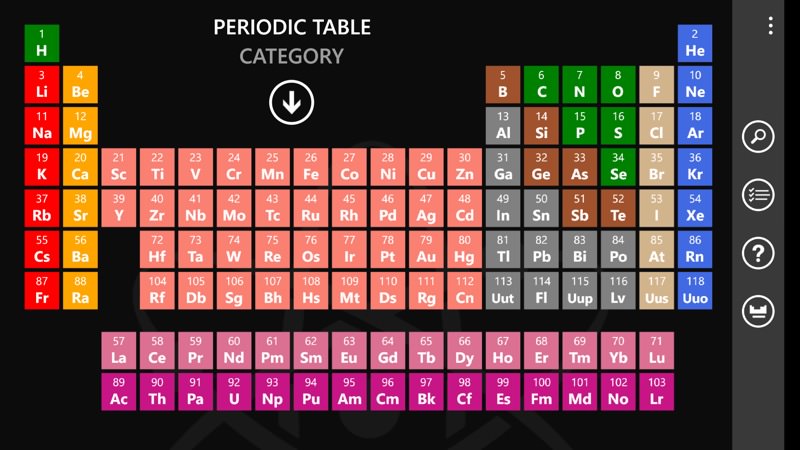

As you can see from the above screenshot, it has various info, such as group, period, density, boiling point (BP) and melting point (MP), along with original discoverer etc. If you swipe the screen to left you will get detailed information like atomic weight, atomic radii, abundance, ionization energy etc.:

One more left swipe will give you its isotopes details:
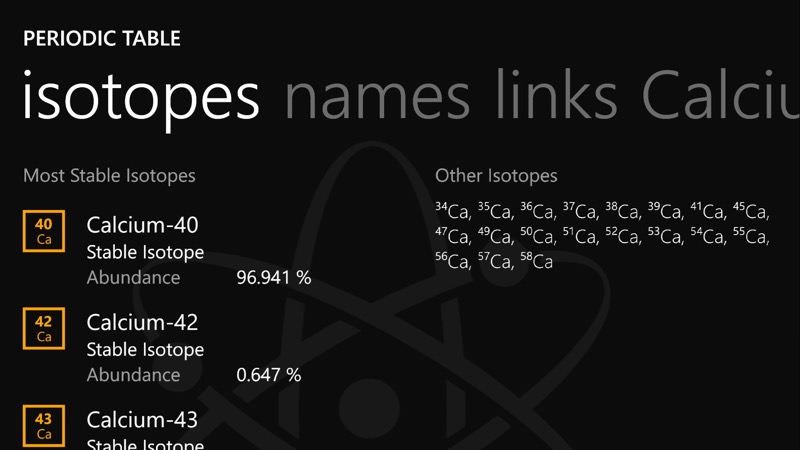
I have checked the accuracy of the information and it is the same as what we read in reference textbooks and existing literature.
Another great feature of the application is a molar mass calculator, it can be accessed through the three dot menu at bottom. In this, you can enter the chemical formula of any compound, known or unknown, in alphanumeric format and then it automatically display the weight of the compound.
For example I entered the chemical formula of Glucose (C6H12O6):
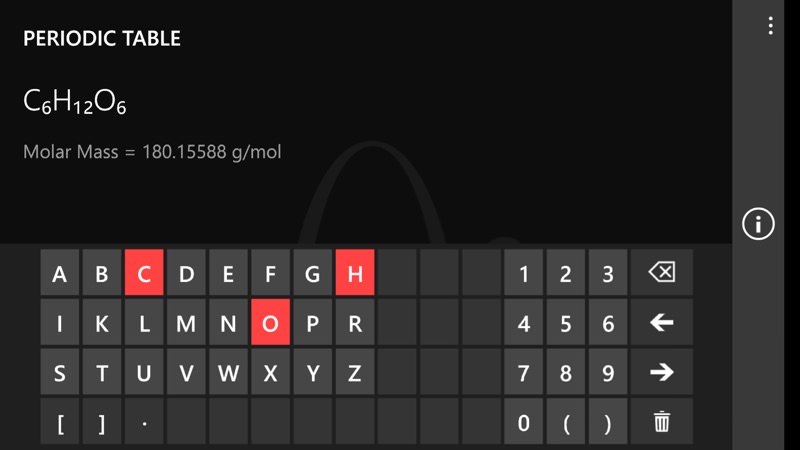
This application will be most useful for researchers in chemistry and biology, undergraduate students etc. It has also multi lingual support for more than 25 languages. And it's free!
2. Lab Helper
This is the most useful application for researchers in life science disciplines. I frequently use this application for many things in the lab. It has the following features:
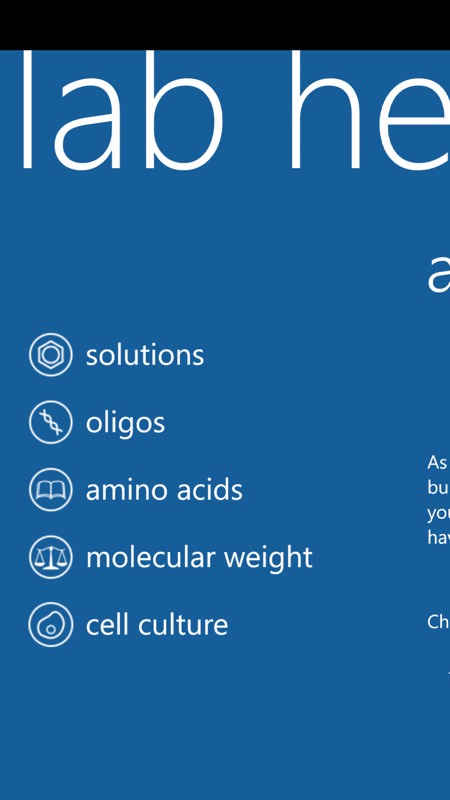
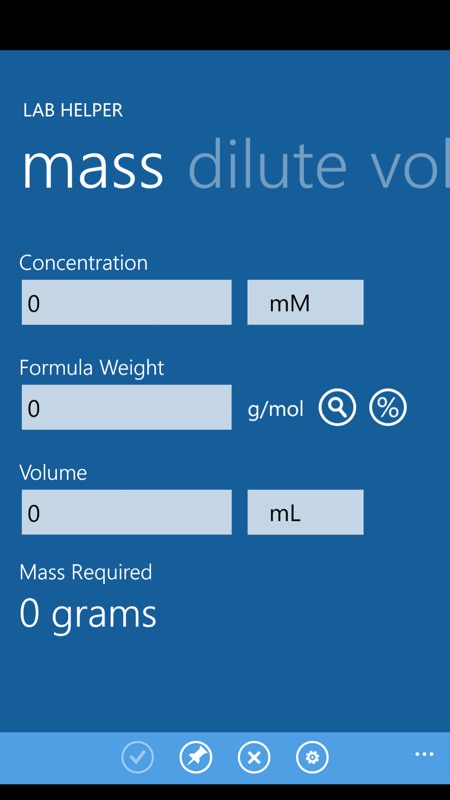
The first menu is “Solutions”, from which you can calculate the molarity, mass required to prepare X concentration of compound for Y volume, or vice versa. You should know the molecular weight of the compound or if you don’t know you can use the search button to dig the require information from an online database. You can change the units of volume, mass, etc. hierarchically from Kilogram to pictogram, liter to pico liter etc.


The second menu is “Oligos” where you can enter the sequence of a gene or primer to know the complimentary nucleotides, molecular weight, etc, very useful for researchers working with PCR machines and DNA biology:
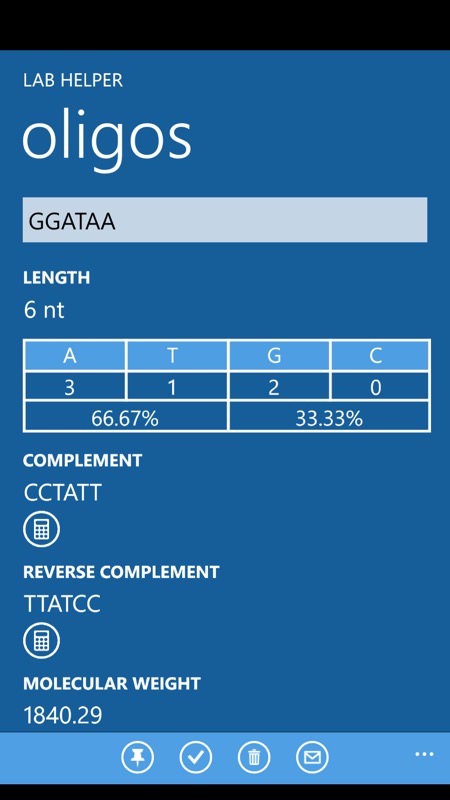
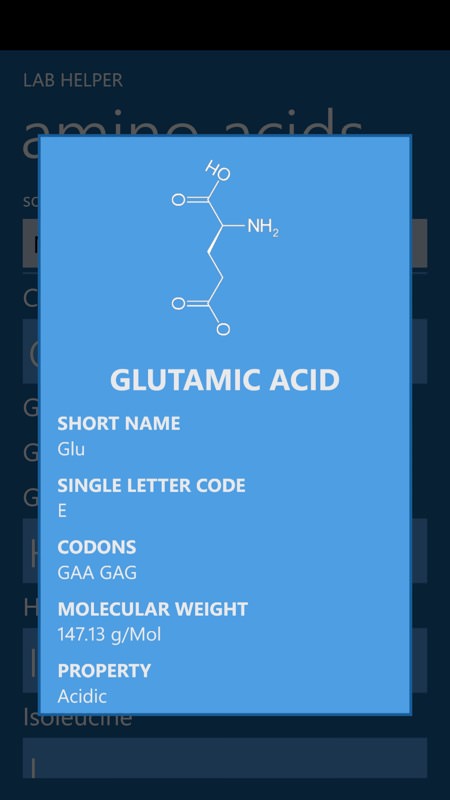
The third menu is “amino acids” (shown above, right) where you can get the list of 20 standard alpha amino acids along with their chemical structure, triplet codons, short and single letter abbreviations, and molecular weights. It is a very useful feature for people working on protein chemistry and bioinformatics. I have verified the codons and other information, it’s pretty accurate.
The fourth menu is just an online database search tool to get the name of a molecule or compound based on formula or vice versa. As you can see in the screenshot below I searched for calcium carbonate and it gave the molecular weight and structure:
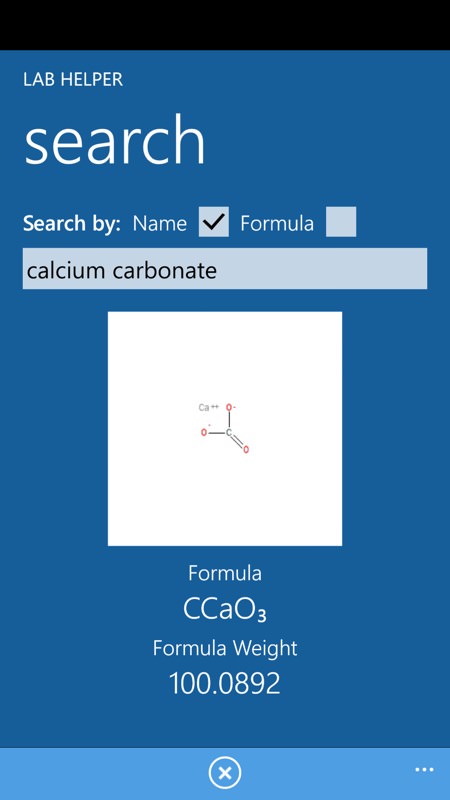

The last feature of the application is “Cell culture”, shown above, right. In this menu, you can calculate the desired volume to dilute the cells for “passaging”. It is a very handy feature in a cell culture lab where you can reduce the effort of doing all sorts of calculations on paper. If you enter the stock cell concentration and desired cell concentration, it will tell you the quantity required for culturing next generation cells in your culture flasks in one step! You can change units on the right side as per your requirement.
You can also pin any of the above mentioned features as live tiles for quick reference. Lab Helper is also completely free.
3. Medical Dictionary
This is quick pocket dictionary extremely useful for doctors and biologists. Though we have Oxford Medical Dictionary, it’s quite expensive ($10) and the words are also limited to 12000 entries. But the “Medical dictionary” application in this review is completely free and has more than 120,000 entries. The user interface is very simple, you can sort the words as per the alphabet. You can click on individual letters to navigate easily. For quick response, you have search functionality too:

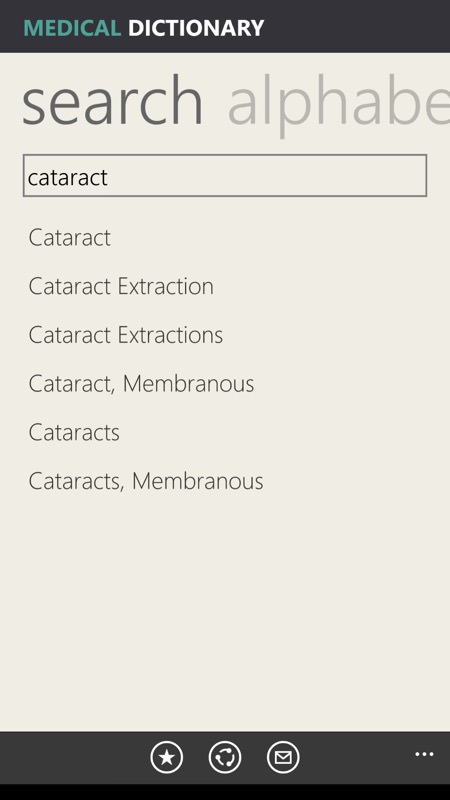

In my experience, it has covered almost all the regular words as well as rare words used in medical terminology. You have the option to share a word by email.
The biggest drawback for this application is the presence of ads and sadly there is no paid version to get rid of them.
4. Biology Dictionary
This is similar to Medical Dictionary, but the entries are more emphasised for people in the life science community. The application lacks basic features like selecting a particular letter to scroll down the word list. The only way to get down to words a long way from the start of the alphabet is by using the search option:

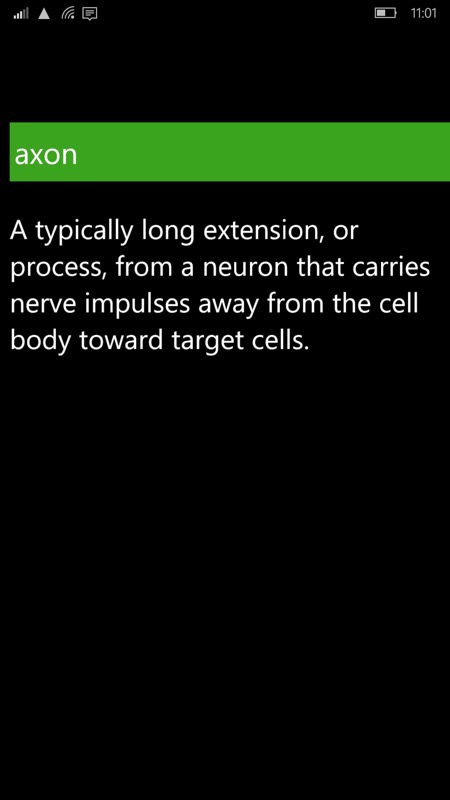
The application is free to download and thankfully ad-free this time.
5. Drugs Dictionary
This dictionary is mainly aimed at pharmacists and doctors. It covers almost all the generic drug names. The problem with the application is that the amount of information provided is much too big to be called a mere 'dictionary'. A normal user will find it difficult to understand, but nevertheless it is a great application:



For example in our review, I searched for the drug Prednisolone (a steroid), it lists out everything about it, such as history, how to take it, side effects, storage, etc. Users are advised to take the information with a pinch of salt and it should be only used for quick reference.
The application is free to download provided you don’t mind ads, but there is a paid version ($1.49) without ads too.
6. Normal Lab Values
The main use of this is to refer to normal values of as many as 40 parameters commonly assessed in a diagnostic lab or clinic. The basic information is divided into 5 sections, clicking on any section will give you the related normal values of parameters sorted alphabetically:
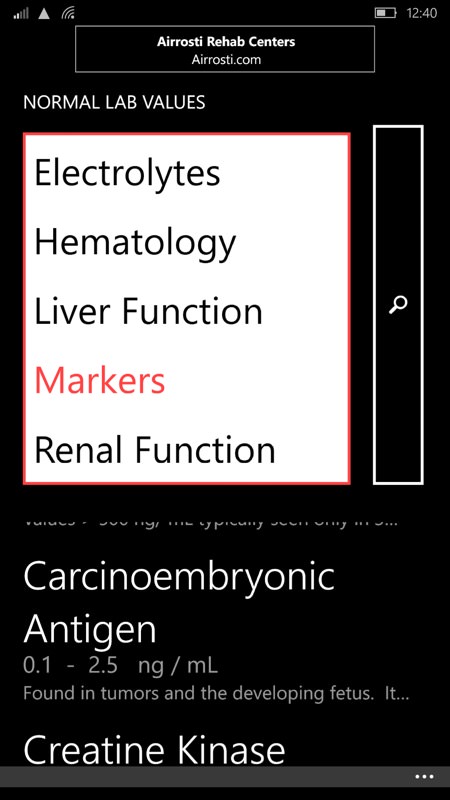
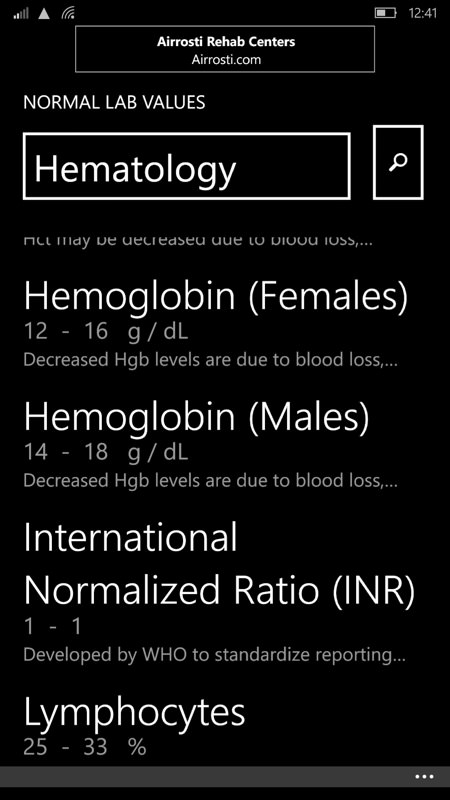

For example in our review I selected the “Hematology” section, which will sort all the blood related parameters, information such as hemoglobin levels in males and females, etc.
If you click on any of the parameters, it will then show detailed information about that particular parameter. As you can see from the screenshot above, when I tapped on “Platelets” it showed the normal count in blood, diseases associated with it, etc.
The information provided is accurate and you can get more about certain values or parameters if you have an Internet connection. It redirects to the National Center for Biotechnological Information (NCBI) U.S web page, which is regarded as the most authenticated information available on the web. The application has another good feature where you can edit the values of cerain parameters. This will be useful sometimes, for example, the levels of hemoglobin may vary slightly among the population from country to country, depending on the altitude of living etc. In such cases you can edit the values to normal local values in that region or country.
The application is free to use and ad-free.
I have covered a wide variety of applications for the scientific community and medical professionals in this guest article for AAWP - please let us know, perhaps in the comments below, if you have come across any similar useful applications.
___________
Raja also has a blog and is based in India.
